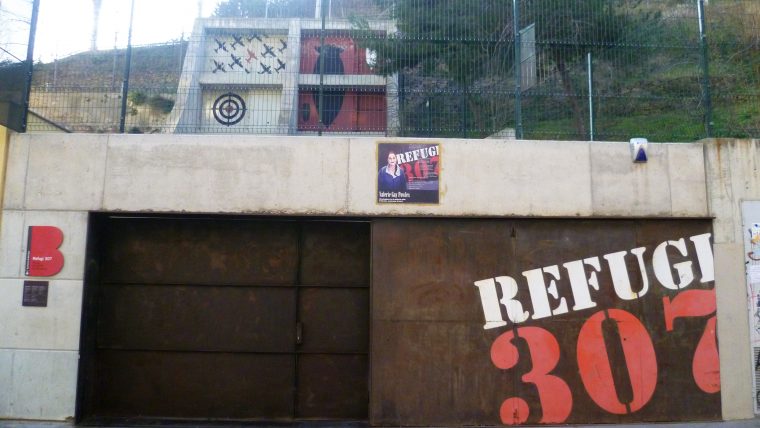
When, during the Civil War, the people of Barcelona had to face the new phenomenon of aerial bombardments, they built numerous underground shelters to protect themselves. Refugi 307 in Poble-sec, one of the biggest, is today an interpretation centre for the history and memories. Part of the Museu d’Història de Barcelona, it also offers guided tours.
Safety underground
During the Spanish Civil War, Barcelona was the first city to be systematically bombed from the air. The city’s people set up the Passive Defence Council, which built a great number of air-raid shelters around Barcelona to protect themselves. There is evidence of almost 1,300 bomb shelters, and that of Poble-sec was among the largest, able to hold around 2000 people.
Built by the local residents themselves, Refugi 307 takes advantage of the topography and the slope of Montjuïc, where it is located, which enables it to have a street-level entrance at the end of Carrer Nou de la Rambla. Inside, it opens up into a network of almost 400 m of tunnels, which have electricity, a toilet, kitchen, seating and a play area for the little ones, as well as a small nursing station that could tend to the injured.
Indelible memory
As a historical location testifying to the difficulties of that era, today Refugi 307 is managed by the Museu d’Història de Barcelona (MUHBA). A guided tour allows you to walk through the tunnels and see the elements that still remain from those times, like posters stuck on the wall specifying some surprising rules for coexistence, such as forbidding you to talk about politics and religion or foster pessimism. A real legacy of the atrocities of war.




Cultural heritage
-
Sants-Montjuïc
el Poble-sec
-
- Phone number
- de dilluns a dijous de 9 a 15 h, i divendres de 9 a 15 h i de 16 a 19 h: 932562122
- Switchboard: 932562100
-
- Web
- http://ajuntament.barcelona.cat/museuhistoria Open in a new window
- http://www.barcelona.cat/gaudirmes/ca Open in a new window
-
- E-mail
- reservesmuhba@eicub.net
- informaciomuhba@bcn.cat
-
- Titularity
- Public center
- Address:
- Carrer Nou de la Rambla, 175
- Districte:
- Sants-Montjuïc
- Neighborhood:
- el Poble-sec
- City:
- Barcelona
Timetable
| Dies | Hores | Preus |
|---|---|---|
Diumenge Tancat 25 desembre, 1 gener, 1 maig i 24 juny |
de 10.30 h a 13.00 h | Entrada general: 3.5 € Entrada gratuïta: · Registrats al programa Gaudir+BCN · Barcelona Card Amb l'entrada combinada es pot visitar aquest espai. L'entrada és vàlida durant 6 mesos. |
La Nit dels Museus 2025: 17 de maig |
de 19.00 h a 01.00 h | Entrada Gratuïta |
Places limitades.
Imprescindible reserva prèvia.
Visites:
A les 10:30 en anglès
A les 11:30 en castellà
A les 12.30 català
A través dels seus 400 metres de túnels, es poden reviure les angoixes d´una ciutat que, durant la Guerra d´Espanya, s´enfrontà a un fenomen nou: el bombardeig indiscriminat sobre la població civil, una pràctica militar que només havia estat breument assajada durant la Primera Guerra Mundial. Per fer-hi front, les administracions i la població treballaren plegats en la construcció de centenars de refugis. Molts romanen encara vius a les entranyes de la ciutat, però pocs són visitables. El refugi 307 n´és un dels millors exemplars, i alhora, esdevé un autèntic memorial de la lluita per la supervivència i el desastre de les guerres.
Esdeveniments
If you would like to make a correction related to this activity...
LET US KNOW
